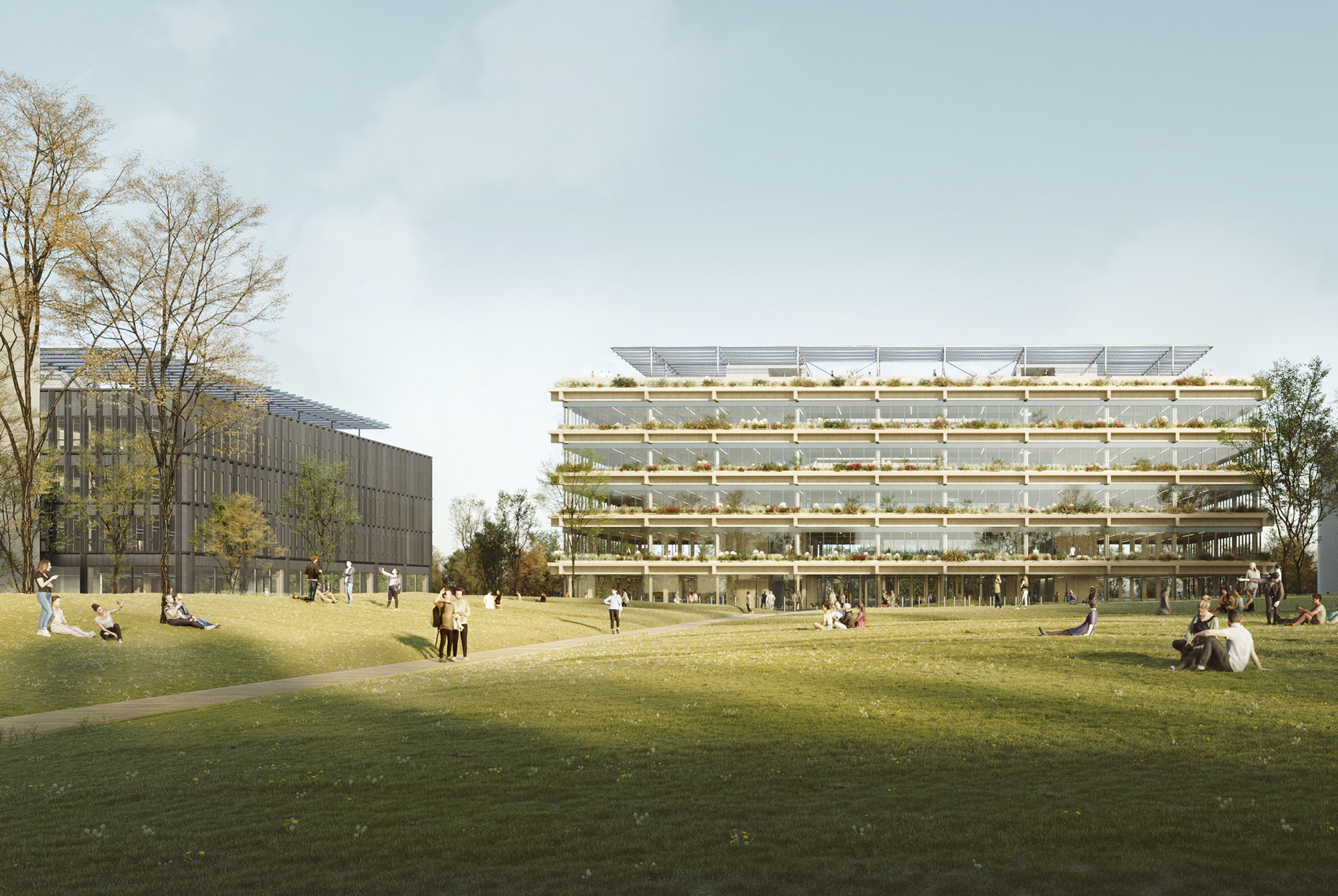University of Technology Nuremberg
It’s not every day that a university is presented with the opportunity to establish an entirely new campus. Yet, this is precisely what the University of Technology Nuremberg (UTN) is undertaking. Officially founded in 2021, UTN is developing its new campus in the south of Nuremberg, on the site a former railway station.
Jenny Richer is the university’s team leader for buildings and infrastructure. She is, amongst many other things, responsible for the briefing and architectural programming activities for the new campus. In this Q&A, Jenny explains why and how she and her team are using BriefBuilder.
Can you tell us a bit more about the project?
To clarify, developing a new campus isn’t a single project but a series of projects that will be realized over time. Our projects are at various stages of development, ranging from early-stage ideation to actual construction, and they do not only encompass buildings, but also infrastructure, landscaping, and transportation solutions.
Our overarching objective is to create a vibrant, sustainable urban campus that will ultimately consists of approximately 50 buildings for up to 6,000 students. Currently, our first building, Cube One, is underway. Additionally, we’ve recently concluded a design competition for two more buildings, with several more in the pipeline. We’re busy!

The new university campus will be part of a new quarter covering almost 90 hectares in the south of Nuremberg. The site will provide room for the university, research institutes, and housing for up to 6,500 people (Image: Ferdinand Heide Architekt/TOPOS Stadtplanung Landschaftsplanung Stadtforschung. Courtesy of UTN).
How did you come to use BriefBuilder?
Well, we actually started out with writing our requirements in Word. That worked for a while, but we found that capturing requirements in a document is essentially a disaster. It is all text, all prose! You cannot systematically categorize requirements, you cannot easily add requirement IDs, you cannot link requirements to BIM models. So, we started looking for a professional requirements management tool. There are many of such tools on the market, but most of them are aimed at software development. But then we heard about BriefBuilder and its specific focus on briefing and architectural programming for construction projects. We tried it and it proved to be a very convenient solution for us. So, now, all our projects are in BriefBuilder.
Capturing requirements in a document is essentially a disaster. It is all text, all prose! So, we started looking for a professional requirements management tool

UTN’s aim is to foster a green campus that strives for climate neutrality, prioritizing the utilization of renewable energies and eco-conscious building materials, such as wood. Furthermore, they explicitly aim to create buildings with utmost adaptability to be able to accommodate future changes in use (Image: Ferdinand Heide Architekt/TOPOS Stadtplanung Landschaftsplanung Stadtforschung. Courtesy of UTN).
How did your team respond to the implementation of BriefBuilder?
Given the novelty of our team—our oldest team member has only been here for three years—embracing new tools is second nature to us. BriefBuilder actually plays a role in dealing in this ‘newness’ because it is our centralized repository for project data. Jokingly, we often refer to it as our “central brain”. Because of its importance, we include BriefBuilder training as part of our onboarding process for new team members.
BriefBuilder is our centralized repository for project data. Jokingly, we often refer to it as our central brain
What is your favourite feature in BriefBuilder?
The cross tables! They give a very quick understanding of the scope and the requirements of a project, which is crucial in my role. I also love the ‘bubble diagrams’ because they give a very visual overview of all the spaces in a project.
Any recommendations?
Preparation is key! Instead of rushing into writing a brief, you should take the time to strategize—consider your tools, allocate resources, organize processes, and don’t hesitate to seek help, especially if you’re new to this. Investing time and resources will pay off because a good brief will make your project easier to manage. It lays the groundwork for project success.
A good brief will make your project easier to manage. It lays the groundwork for project success

UTN organized an architectural competition for the design of two more buildings on the site. The use of both buildings will be very diverse with high public-intensive uses. Both buildings must meet UTN’s high sustainability standards (Image: Burckhardt+Partner GmbH with Buro Happold. Courtesy of UTN).
Many thanks to Jenny for sharing her valuable insights!
More information about UTN’s development process can be found hier.

